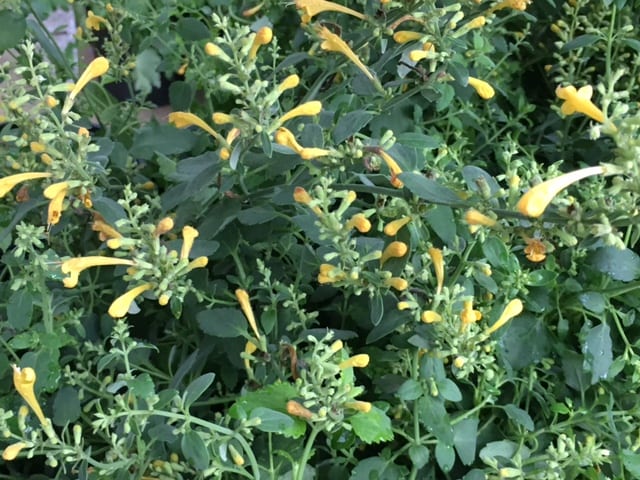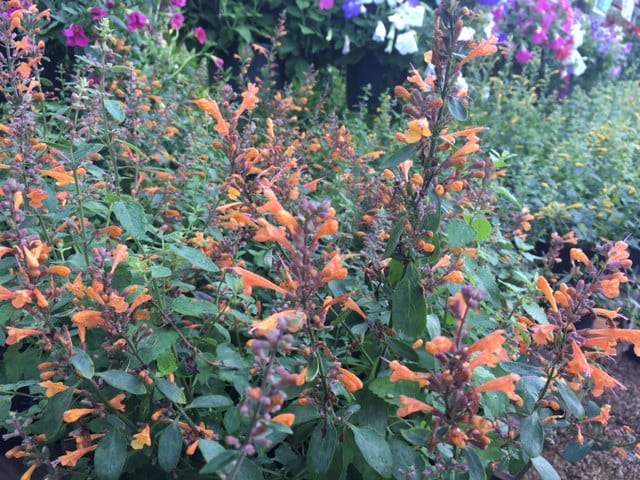Agastache, also known as hummingbird mint, horsemint, and hyssop, is a wonderful perennial to include in your San Antonio pollinator gardens or potted patio gardens. When agastache is flowering it becomes a workhorse, producing long lasting blooms and bringing in the pollinators like kids at a birthday party running to a piñata. Hummingbirds, butterflies and bees will be appreciative of this nectar source during the dry spells of summer and into fall.
Agastache is in the plant family Lamiaceae, which is the mint family. Partial to full sun is the recommended light exposure for best blooms. In San Antonio, late afternoons can be particularly brutal, so late afternoon shade can offer some heat relief allowing some heat relief to the plant. Bloom color of agastache can vary with variety but the gamut runs through shades of white, yellow, apricot, orange, pink, rose, purple, and blue. Flowers are showy and borne on spikes, offering your gardens and containers not only color, but interesting texture too. It’s foliage gives off a wonderful lemony-peppermint fragrance when brushed up against or crushed. Deer tend to be turned off by the fragrance of agastache which is a plus to many San Antonio gardeners, and gardeners in the Texas Hill Country.




Along with the variety of colors, agastache also varies in size. You may find Blue Fortune agastache which can grow 3’ – 4’ tall or a variety like Kudos™ agastache which tops it’s flowering height at about 18”. Having size options with different varieties makes it easy to fit agastache somewhere in your landscape. Use taller varieties as the thriller in the middle of your container arrangements, or shorter varieties in borders of perennial gardens. Go crazy and plant in mass form by filling up a bed with taller varieties planted in back and shorter varieties planted in front for a San Antonio pollinator garden bonanza!
A great quality for plants in San Antonio is to have drought tolerance. Once established, agastache is quite drought tolerant, though it will always perform best when watered occasionally (more often in extreme temperatures or when planted in containers). As flowers become spent, clipping them off will encourage more blooms, and also keeps your plants looking tidy. Late winter/early spring give agastache a hard prune and a good feeding to get new growth off to a great start.
Are you ready to increase the beauty of your landscape and increase the smiles on your face created by the sight of massive amounts of butterflies, hummingbirds, and bees swirling around your flowers? Yes? Then come on in to Rainbow Gardens to pick out the agastache that fits perfectly into your landscape.
~The Happy Gardener, Lisa Mulroy


When will you have any English seedless cucumbers?
Hi Kent,
They’ve been getting delivered throughout the weeks but have been getting snatched up as quickly as we are putting them out sometimes! It’s been a wild spring! Best bet is to visit or call Wed – Fri when all of our trucks for the week have arrived. Sorry it’s not an easy answer this season.